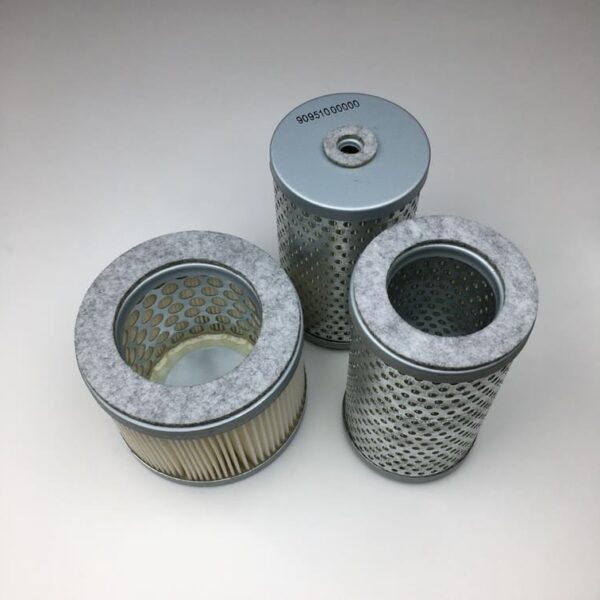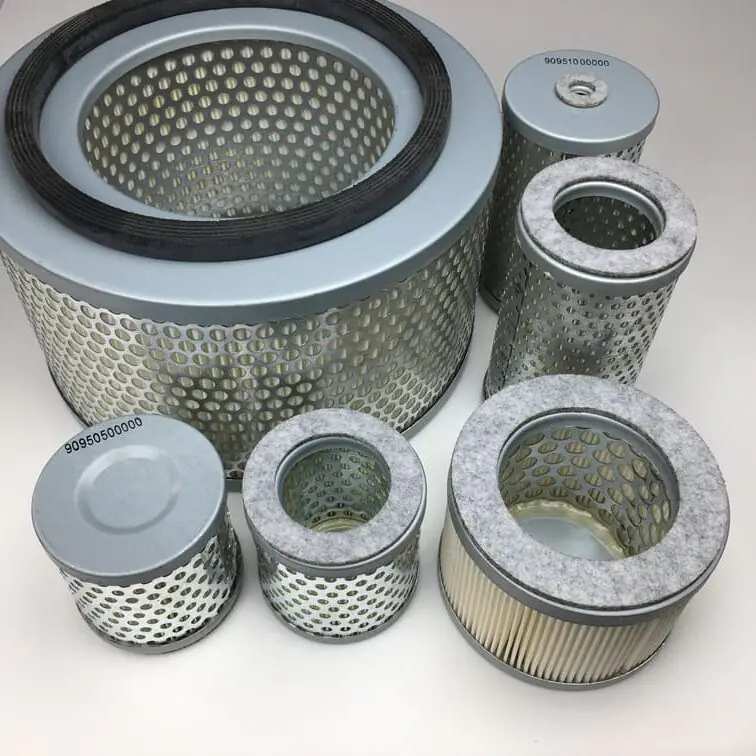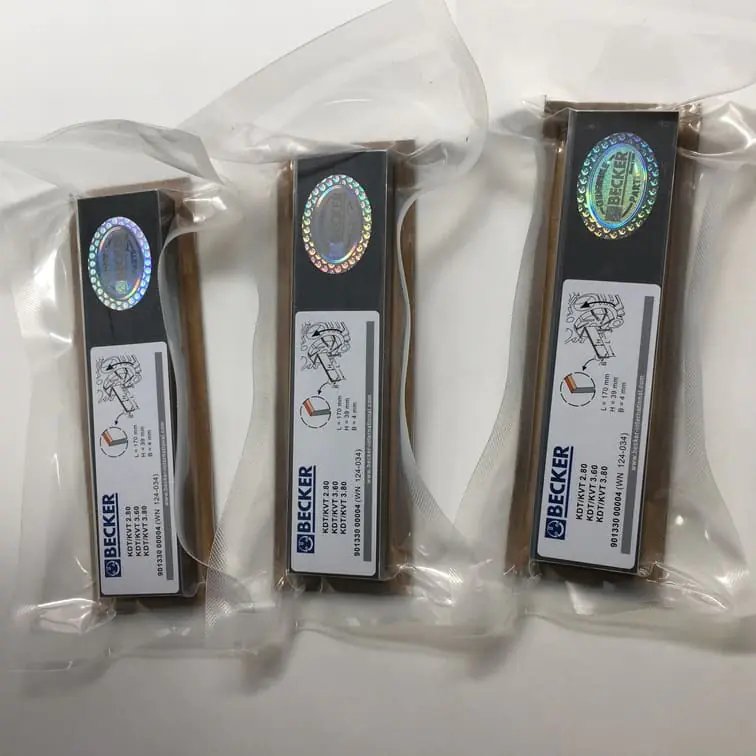How to Use a Venturi Vacuum Pump
Venturi vacuum pumps offer a unique solution for creating a vacuum by using compressed air, making them valuable in many industrial and automotive applications. Unlike traditional vacuum pumps, they have no moving parts, relying on the Venturi effect to generate a vacuum by converting the kinetic energy of compressed air into potential energy. This article will explore how to use a Venturi vacuum pump, how it works, and its applications.
Understanding the Venturi Effect and Its Use in Vacuum Pumps
What Is the Venturi Effect?
The Venturi effect is a physical phenomenon observed when a fluid passes through a constricted section of pipe, resulting in a decrease in pressure and an increase in velocity. This principle is named after Giovanni Battista Venturi, who discovered how constricted fluid flow results in reduced pressure. Venturi vacuum pumps utilize this effect to generate suction without mechanical parts.
Venturi vacuum pumps use compressed air to create a vacuum, which is then harnessed for various purposes, such as operating machinery, clamping systems, and providing suction for fluid transfer. These pumps are popular due to their simplicity, reliability, and lack of moving parts, which makes them easy to maintain.
Basic Components of a Venturi Vacuum System
A Venturi vacuum system comprises a few key parts:
- Compressed Air Source: This provides the necessary air for the pump to function.
- Nozzle or Throat: The narrow part where the Venturi effect occurs, creating a low-pressure zone.
- Exhaust Port: This discharges the spent air after the vacuum is generated.
The main benefit of these pumps is that they do not require electricity or complicated machinery. They operate purely on the power of compressed air, which makes them ideal for use in environments where reliability and simplicity are crucial.
Applications of Venturi Vacuum Pumps
Industrial Applications
Venturi vacuum pumps are widely used in industrial applications, such as material handling and robotics. They can be integrated into pick-and-place systems that require reliable vacuum pressure for grabbing and moving items.
- Pick-and-Place Operations: Many manufacturing processes need to lift and place items using vacuum suction, and Venturi vacuum pumps are an ideal fit because they are robust and easy to control.
- Packaging and Labeling: Venturi pumps are commonly used to apply labels and manipulate packaging materials, as they provide consistent and repeatable vacuum strength.
- Waste Removal Systems: These pumps are also found in waste removal systems, where they create suction to carry materials through pneumatic conveyance tubes.
Automotive Applications
In automotive contexts, Venturi vacuum pumps can be used in brake booster systems or for automotive AC systems. They are especially valuable in situations where an electric vacuum pump is not ideal, such as in vehicles without power-assisted brake boosters.
- Brake Boosters: A Venturi pump can supply the vacuum necessary to assist brake booster operation, thereby improving braking efficiency without needing an electrically-driven vacuum pump.
- AC System Maintenance: Venturi vacuum pumps can be used to evacuate the refrigerant lines before charging an AC system, helping to remove any residual air and moisture that could harm the system.
How to Use a Venturi Vacuum Pump Effectively
1. Set Up Your Compressed Air Supply
To use a Venturi vacuum pump, you need a source of compressed air. Ensure that the pressure provided is within the operating range recommended by the manufacturer—typically between 70 to 100 PSI.
- Use an Air Compressor: Most industrial-grade compressors can generate the pressure required to operate the Venturi pump efficiently.
- Ensure Clean Air Supply: The compressed air should be filtered to remove contaminants that could affect the vacuum pump’s efficiency.
2. Connect the Compressed Air Supply to the Venturi Pump
Use appropriate fittings to connect the compressed air hose to the input port of the Venturi vacuum pump. Be sure that all connections are tight to avoid air leaks, which can decrease the pump’s efficiency.
- Fittings: Use quick-release fittings or threaded connections that are rated for the pressure in your system.
- Avoid Leaks: Any leakage will reduce the efficiency of the pump, as the venturi relies on precise airflows.
3. Attach the Vacuum Line
Connect a vacuum line from the output port of the pump to the component that needs vacuum suction. This could be for operating pneumatic grippers, clamping systems, or drawing fluids.
- Choose the Correct Hose Size: Selecting the appropriate diameter hose is important for ensuring maximum suction power.
- Use Hose Clamps: Secure the hose using clamps to prevent it from coming loose during operation.
4. Operate the Compressed Air
Activate the air compressor, allowing compressed air to flow through the Venturi pump. As the air passes through the constricted area, a vacuum will be generated at the output port. This vacuum can then be used for various applications.
- Monitor the Pressure: Keep an eye on the pressure gauges to ensure the compressed air remains within the recommended range.
- Adjust Flow If Needed: Some applications may require more or less vacuum pressure. Use a flow control valve to regulate the pressure if necessary.
Benefits of Using a Venturi Vacuum Pump
1. No Moving Parts
One of the greatest advantages of using a Venturi vacuum pump is that it has no moving parts. This makes it highly reliable, with minimal risk of mechanical failure. Maintenance is often reduced to just ensuring the air supply is clean and free from contaminants.
- Reduced Downtime: Since there are no moving components, there is less chance of mechanical issues that could lead to downtime.
2. Simplicity and Cost-Effectiveness
The Venturi vacuum pump is simple and cost-effective compared to traditional mechanical vacuum pumps, which can be complex and require significant maintenance.
- Lower Initial Investment: Venturi pumps are typically cheaper to buy than electric or rotary vacuum pumps.
- Ease of Use: These pumps are very simple to operate, making them accessible even for users who are not experts in vacuum technology.
3. Versatility
Venturi pumps are also versatile. They can be used in numerous scenarios, from automotive repair to industrial manufacturing, with minimal modification.
- Portable: Because they don’t require electrical connections, these pumps are easily portable.
- Wide Range of Applications: From handling delicate electronic components to evacuating fluids, Venturi vacuum pumps can do it all.

Original Becker Set of 5 Vanes – Available for efficient vacuum pump operations. Learn more
Common Mistakes and How to Avoid Them
1. Incorrect Pressure Settings
One common mistake is using incorrect pressure settings for the compressed air. Too little pressure will fail to generate a sufficient vacuum, while too much pressure could damage the Venturi pump or connected components.
- Check the Manual: Always refer to the manufacturer’s guidelines regarding pressure settings.
- Use a Pressure Regulator: This ensures that the incoming air pressure remains stable and within the desired range.
2. Using the Wrong Type of Air Supply
Venturi pumps require clean, dry air to work effectively. Using unfiltered compressed air can lead to the buildup of debris in the system, reducing efficiency and potentially damaging the nozzle.
- Install an Air Filter: An inline air filter can remove contaminants before they reach the Venturi pump.
- Ensure Proper Moisture Removal: Use an air dryer to ensure moisture does not enter the system, especially in humid environments.
3. Poor Hose Connections
Loose or poorly secured hose connections can lead to air leaks, reducing the overall efficiency of the vacuum system.
- Inspect Hoses Regularly: Regularly check hose connections to ensure they remain tight.
- Use Quality Connectors: Invest in high-quality connectors to minimize the risk of leaks.
Frequently Asked Questions
1. Can I use a Venturi vacuum pump without compressed air?
No, a Venturi vacuum pump relies entirely on compressed air to function. Without an adequate compressed air supply, it will not generate a vacuum.
2. What are the main advantages of a Venturi vacuum pump?
The main advantages include no moving parts, simplicity, versatility, and ease of maintenance, making it a cost-effective solution for many vacuum applications.
3. Is a Venturi vacuum pump energy-efficient?
While Venturi pumps do consume compressed air, they are efficient in environments where compressed air is readily available and can be cycled through multiple systems.
4. Can Venturi vacuum pumps handle liquids?
Yes, Venturi vacuum pumps can handle some liquid transfers, particularly in applications involving small amounts of fluid.
5. How do I know if my Venturi pump is working properly?
You can tell if the pump is functioning correctly by monitoring the pressure gauge and observing whether a sufficient vacuum is being generated for the intended application.
Conclusion
Venturi vacuum pumps are versatile, reliable, and easy-to-use tools that provide a host of benefits in both industrial and automotive settings. By utilizing the Venturi effect, these pumps can generate a vacuum without the need for moving parts or electrical connections, making them ideal for environments where reliability is paramount. Whether you’re using it for brake boosters in cars or pick-and-place systems in manufacturing, understanding how to use and maintain a Venturi vacuum pump can maximize efficiency and reduce downtime.
For more information on high-quality vacuum pump components, visit Vacuum Pump Spare Parts. Investing in the right tools and parts can ensure that your Venturi vacuum system remains efficient and effective, meeting all your operational needs.




